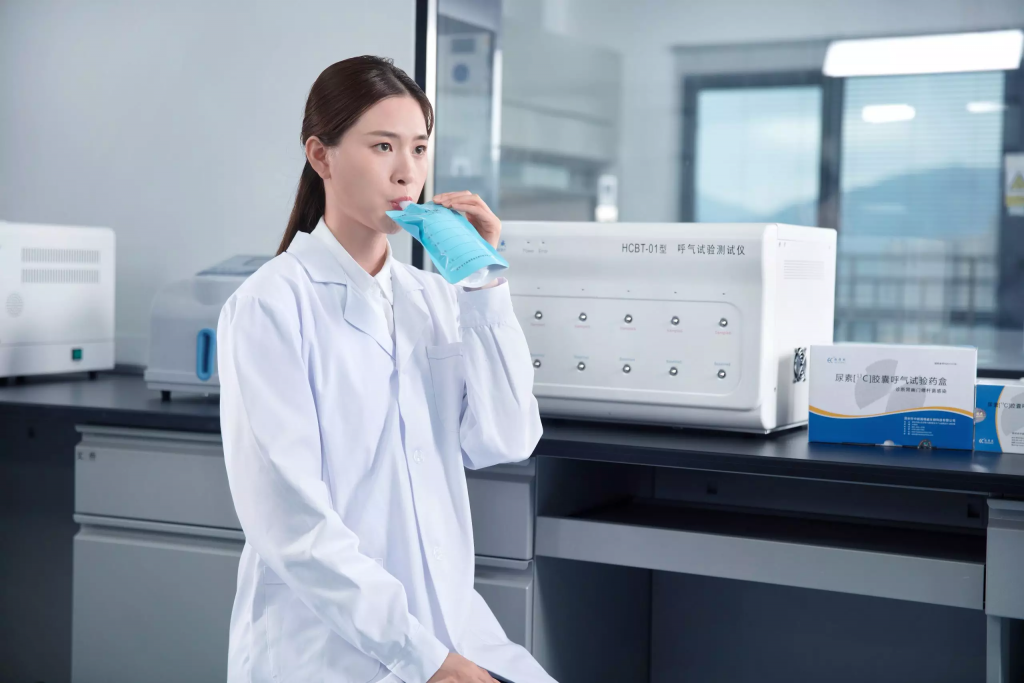Headway offers advanced solutions for the diagnosis of Helicobacter pylori (H. pylori) infections, providing a urea breath Helicobacter Pylori analyzer. This diagnostic tool plays a crucial role in detecting H. pylori, a pathogenic bacterium linked to stomach ulcers and other gastrointestinal disorders. By understanding the different detection methods, healthcare providers can choose the most effective tools for accurate, quick diagnosis.

Types of Urea Breath Test (UBT) Analyzers
13C UBT Analyzer
The 13C UBT analyzer is an advanced, six-channel detection instrument capable of testing six samples simultaneously. This H. pylori rapid test device uses infrared technology to measure the concentrations of 13CO2 and 12CO2 in a patient’s breath. When a patient consumes a special urea solution containing 13C, the presence of H. pylori bacteria in the stomach alters the isotopic composition of the carbon dioxide released in the breath. The change in isotopic abundance is quantified as the delta over baseline (DOB), providing a clear indication of infection. This type of analyzer ensures a highly accurate and efficient process for H. pylori detection.
14C UBT Analyzer
In contrast, the 14C UBT analyzer operates on a different principle. After the patient ingests a 14C-labeled urea capsule, any H. pylori present in the stomach will produce urease, which breaks down the urea into 14CO₂. The analyzer detects the presence of 14CO2 by measuring the beta radiation emitted by the 14CO₂. The presence of 14CO₂ in the exhaled breath indicates a positive result, confirming the presence of H. pylori.
Conclusion
Headway‘s urea breath Helicobacter Pylori analyzer offers reliable and efficient tools for detecting H. pylori infections. Whether using the 13C or 14C detection method, these devices provide healthcare professionals with quick, accurate results to guide treatment decisions and improve patient outcomes. With Headway, early detection is made easier, helping patients manage their gastrointestinal health more effectively.


